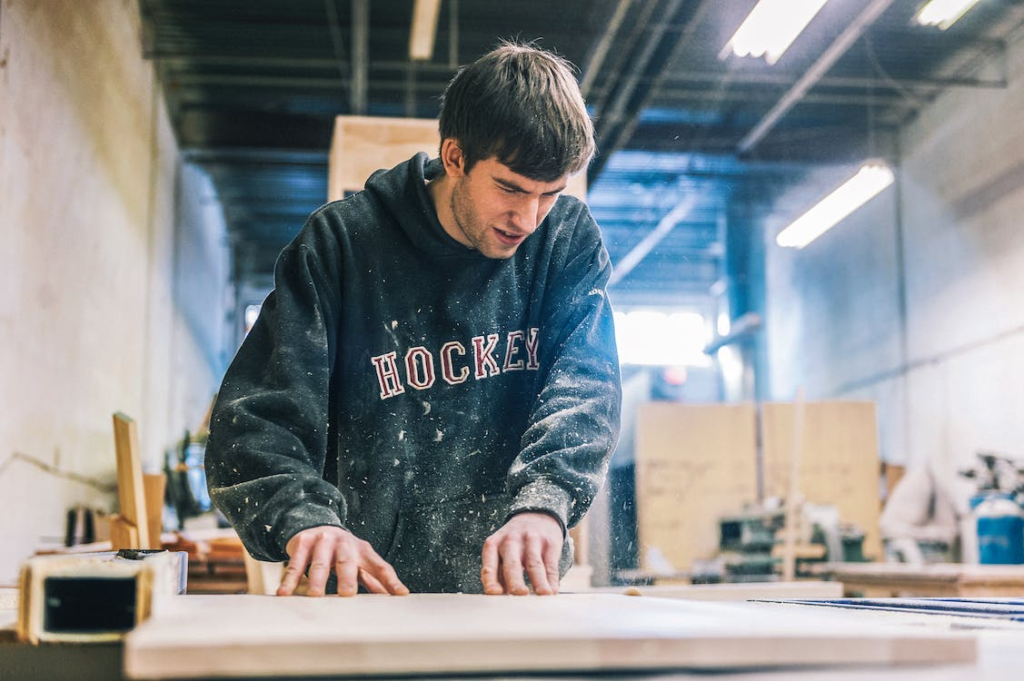What Is Exterior Waterproofing and Its 5 Amazing Benefits?
Water, which is probably one of the strongest forces in the natural world, both creates life and destroys it. Water is an evergreen rivalry to your house or a structure – it can continuously make its way into your premises, causing discomfort, problems, and costly repairs. As such, external waterproofing is a mighty weapon, boasting several impressive benefits besides weather resistance.
In a comprehensive blog, we explore external waterproofing, debunking its misconceptions and highlighting its exceptional advantages.
If you’re a homeowner or even if your curiosity about how to protect construction from problems related to water drives you to this book, read on and get vital information.
What is Exterior Waterproofing?

Photo by Quintin Gellar:- https://www.pexels.com/photo/full-length-of-worker-working-313773/
Applying waterproofing materials and methods to the external surface of the building walls and foundations is often referred to as exterior or simply waterproofing.
The purpose of external waterproofing is to prevent water from entering the building and protect it from various damages resulting in deterioration and loss of strength over time. By dealing with the problem at its point of origin, this approach prevents water from entering the interior of your premises, thus making it a proactive method for dryness keeping.
1. Improved Energy Efficiency
Water intrusion can cause energy inefficiency and damage to a building’s insulation. Wetness reduces the thermal resistance of insulating materials, which wastes energy for heating or cooling.
Foundation exterior waterproofing retains the building’s energy efficiency at its highest level and aids in maintaining the integrity of the insulating materials. This lowers the amount of energy needed to heat or cool the area, which lowers utility costs and leaves a smaller carbon imprint.
2. Enhanced Indoor Comfort
Water invasion not only causes unpleasant odors in a building but also various problems like humidity, discomforts of residence or work, and so on. Exterior waterproofing avoids dampness inside and preserves the interior dry and cozy. It increases the value of the land, and the property remains saleable and secure for its tenants. There is no comfort in living and working in a damp and cold atmosphere. However, external waterproofing is a lasting solution.
3. Increases Property Value
An external waterproofing investment may greatly increase a property’s value. A building with robust waterproofing makes it marketable, as tenants and buyers are easily attracted. # This indicates that the property has been appropriately maintained, and they will not have further headaches about the water issues. Also, it is good financially on the side of the property owners owing to the peace of mind that follows such waterproof construction, which is justifiable at the higher price.
4. Protects Valuables and Interior Contents

Photo by Harrison Haines:- https://www.pexels.com/photo/man-on-cutting-table-3536424/
Water damage poses significant threats to furniture, crucial assets housed in structures, and personal belongings. In this case, it does not matter whether they are electronics, commercial goods, or family treasures. All of these objects should remain protected against the risk of water damage. Outside waterproofing provides additional safety to these valuable objects by preventing water infiltration into interiors, resulting in damage to these things.
5. Prevents Structural Damage
The capacity of exterior waterproofing to stop water intrusion from causing structural damage is one of its most important advantages. Water seeping into a building’s walls or foundation can cause several problems, such as:
Water pressure can create foundation fractures, jeopardizing the foundation’s structural integrity.
Growth of Mold and Mildew: Structural damage and different kinds of diseases can be caused by the perfect conditions for the development of mold and mildew.
Material Deterioration: Water over a long period will cause wood or drywall to rot or deteriorate.
Concrete erosion: Prolonged contact with water will wear out on concrete surfaces and affect the very stability of a building.
External waterproofing works by blocking water entry into buildings, thereby preventing it from ever coming in contact with the facility. It lengthens the life span of the building by preserving its integrity.
How is Exterior Waterproofing Done?

Photo by Ivan Samkov:- https://www.pexels.com/photo/crop-carpenter-drawing-furniture-sketches-in-notebook-4491846/
Several ways and materials exist that can be applied to waterproof outside walls. The most popular methods for waterproofing external walls are as follows:
Surface Preparation
Therefore, waterproofing is an operation that must only take place after the facades suitable for thermal insulation, which were previously cleaned, are brought into a ready state. Throughout this period, it is necessary to wash away materials like dust and soil from the walls.
Application of Waterproofing Material
The second stage involves the application of an outer coat. Applying these materials on the external walls forms a barricade against the liquid getting to the wall. Moreover, the production processes of extruded waterproofing material have gained various techniques today.
Drainage System Installation

Photo by Andrea Piacquadio:- https://www.pexels.com/photo/happy-elderly-worker-smiling-in-workshop-3846033/
Before one installs anti-corrosion drainage, it should be done after applying the outside waterproofing for the safety of both thermal insulation and waterproofing made in the base and curtain insulator. This machine diverts water from the base wall, thus blocking it from entering the structure. Gravel-lined perforated pipes comprise the drainage system and thus help in debris filtering.
Bottomline
Exterior waterproofing, being one of the benefits, offers an essential technique for building maintenance and protection. This is an informed investment decision for property owners as it may prevent further damage to structures and, at the same time, improve indoor conditions, increase energy efficiency, safeguard valuable items, and increase property value.
External waterproofing is an upstream technique meant to enhance the endurance of facilities in a changing weather world that has been experiencing ever-increasing extreme storms leading to water damage risks. It is, therefore, a construction way one ought to adopt if they are planning to protect their house or any other structure from water infiltration damages.
Header photo credit:- https://www.pexels.com/photo/focused-ethnic-craftsman-working-in-creative-carpenter-studio-5973961/

















Very Informative Article And also Very Easy to understand. i hope you will keep posting this type of article. THANK…